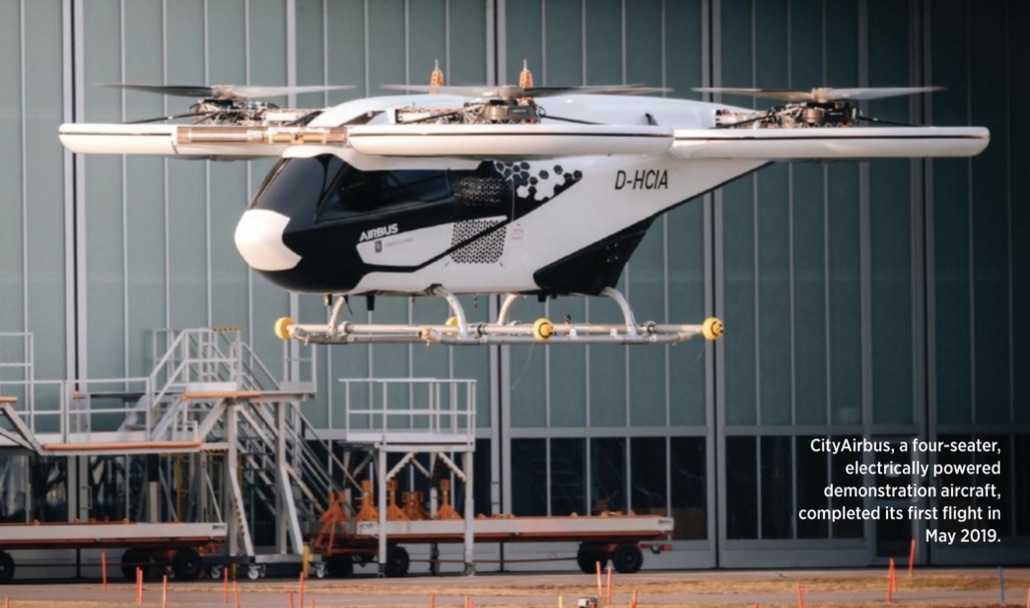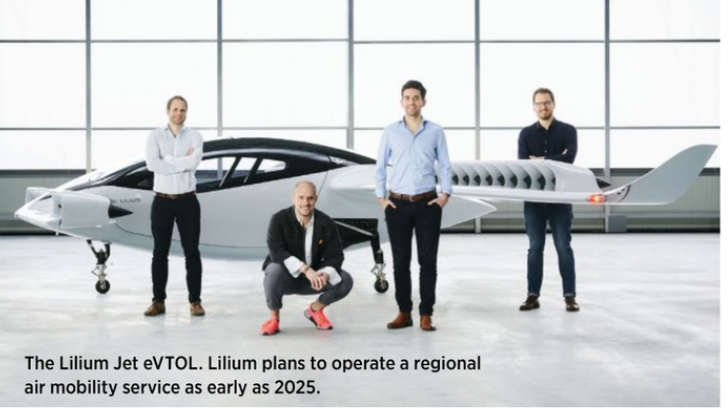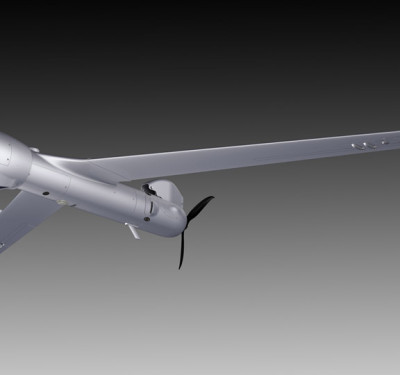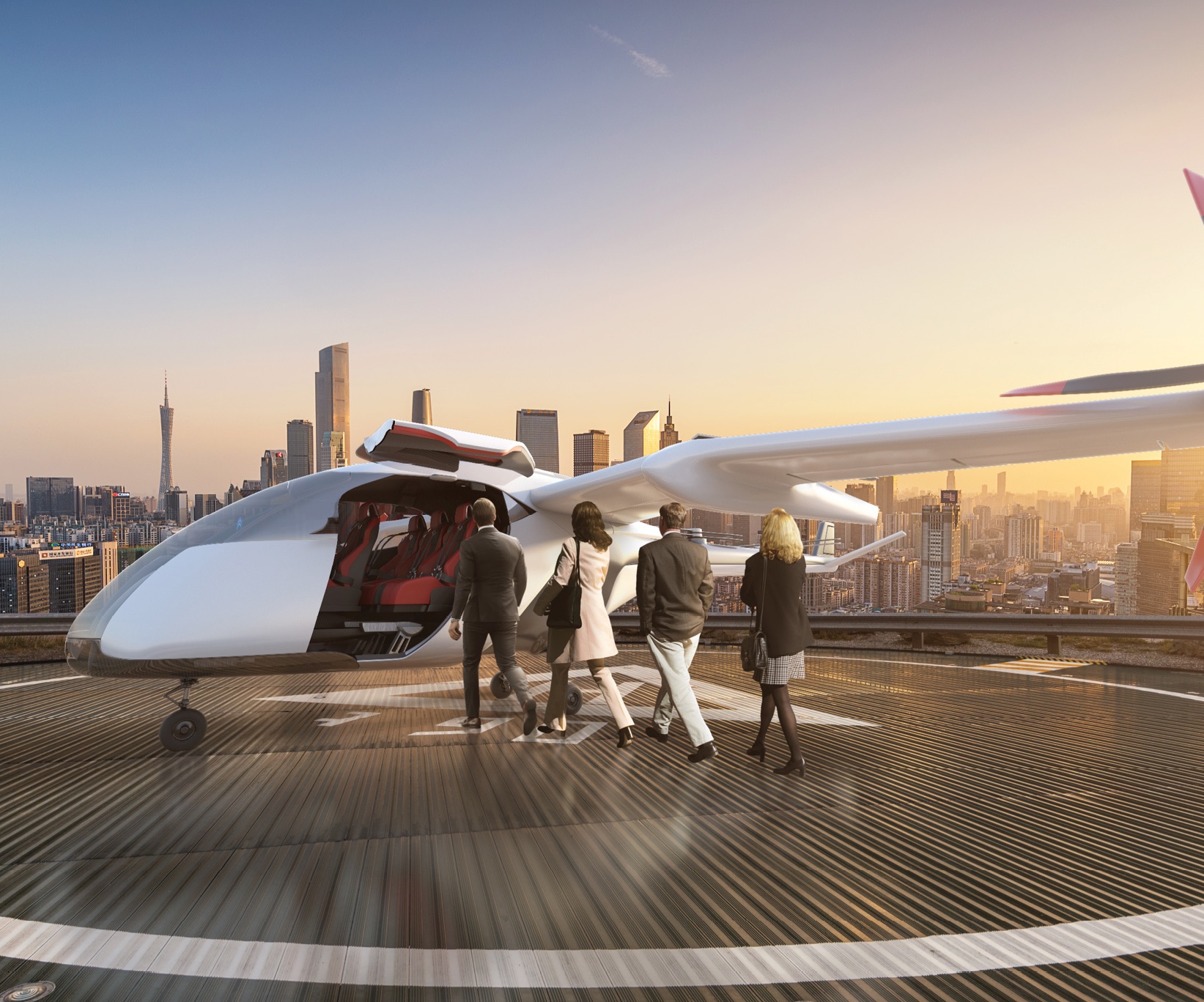
The vision for air taxis and other flying cars is coming into focus, as partnerships, ecosystem integration and converging technologies help define this new market.
Imagine a future where instead of sitting in traffic as you make your way to and from work, you travel via a rideshare vehicle, possibly unmanned, to the nearest vertiport. Your scheduled air taxi drops you off at a landing pad, where the vehicle that will take you to your final destination awaits.
With this new era of transportation, trips that once took an hour or more in traffic can be completed in 20 minutes, maybe less. You no longer waste a significant part of your day commuting, allowing more time to spend with family and friends, enjoy hobbies or be more productive at work. And because there are fewer cars on the roads, both congestion and pollution—along with the problems they cause—are significantly reduced.
This is the ultimate vision behind Urban Air Mobility (UAM)—and it may not be as far off as you might think. Recent progress is promising, as major players develop concept vehicles and explore how to safely integrate them into the National Airspace System (NAS) through infrastructure solutions that will make travel by air taxi seamless.
Of course, many steps still must be taken and challenges overcome for this future to be realized. It will likely start off slow, with a few vertiports and routes per city to expand and build on. Still, there’s significant investment and excitement about where this emerging UAM industry is headed. Some companies are planning to offer piloted air taxi services as soon as 2023.
Part of that progress can be attributed to partnerships, including with stakeholders outside the industry, which is key to moving forward, said Jonathan Hartman, disruptive technologies lead for Sikorsky Innovations. Sikorsky is a Lockheed Martin Company based in Stratford, Connecticut.
“As an industry, we’re really starting to ask some of the right questions and we’re beginning to confront the challenge of integration,” Hartman said. “The folks setting the vision and talking about the future are moving toward discussions about what it will take to make the vision a reality.”

“TAXI!”
At first, there was experimentation with the vehicles themselves—how big they would be, what they would look like and how they would work, said Stephane Fymat, vice president/general manager of Honeywell’s new UAS business unit, based in Charlotte. Today, vehicles have evolved into two categorizations: those that carry a passenger and a pilot and those that carry four plus a pilot (the aircraft will be piloted, at least at first). Some companies are looking at a truly urban solution with aircraft that travel short distances, while others are focused on urban/regional routes where vehicles carry passengers 70 to 100 miles.
“Commercial air transportation today, for the most part, is typically 300 miles or more,” said Steve Nordlund, vice president and general manager for Boeing NeXt, of Manassas, Virginia. “The technology is moving in a way that can allow for air transportation to do much shorter routes, whether that’s package delivery or passenger delivery or some other form of data communication. We think aviation will be used differently in the next 100 years than it was in the first 100 years.”
Aerospace giants and growing startups alike are developing platforms, with some only focusing on the vehicles themselves while others expand their efforts to include route creation and vehicle operation, Fymat said. That wasn’t the case a few years ago, when many planned to use the network Uber Elevate is developing and to rely on the rideshare company to aggregate demand. Now more companies are playing in both spaces.
While all slightly different, the vehicles have similar features. Many are electric vertical take-off and landing (eVTOL) aircraft designed for energy conservation and quiet, emission-free operation. (For details on eVTOL technology and its prototypes, see the feature beginning on page 42).
“There are more than 200 prototypes all over the world; we don’t know how many will survive but we must find the appropriate platform,” said Tomasz Krysinski, head of research and innovation for Airbus Helicopter, part of the global company behind two demonstrator vehicles. “There’s a lot of converging technology. We’re seeing automatization and electrification in terms of electric motors, batteries and light-structure composite carbon production material. The vehicles must be low-noise and have low energy consumption in hover and forward flight.”
Safety, of course, is the top priority. Low complexity is also key to making these vehicles easy for pilots to operate, Krysinski said, and to getting them type-certified. To that end, most manufacturers are transferring mechanical complexity into the software as much as possible to enhance safety, said Fabien Nestmann, head of public affairs for Germany-based Volocopter. VoloCity, a two-seat aircraft for urban flights of about 20 to 25 miles, is a multirotor system with 18 propellers arranged in circles, allowing balanced flying and efficient takeoff and landing.
Manufacturers have developed a variety of concepts to allow for vertical takeoff and forward flight, Fymat said, including tilt rotors and ducted fans. Electrification of propulsion, improved battery life, fly by wire technology, and increasing levels of both automation and autonomy are among notable advances in the underlying technology empowering these aircraft.
One of the biggest challenges is “getting tech readiness of the onboard systems on the vehicle to a point where we’re confident about the ability to certify the complete system,” said Chad Sparks, director of strategic campaigns at Fort Worth-based Bell, the company behind the Bell Nexus 4EX, an aircraft with a four plus one configuration in an electric or hybrid-electric platform.
“There hasn’t been a wide application of these systems in the commercial sector at this point,” Sparks said, “so there are technology maturity and regulation hurdles to overcome.”
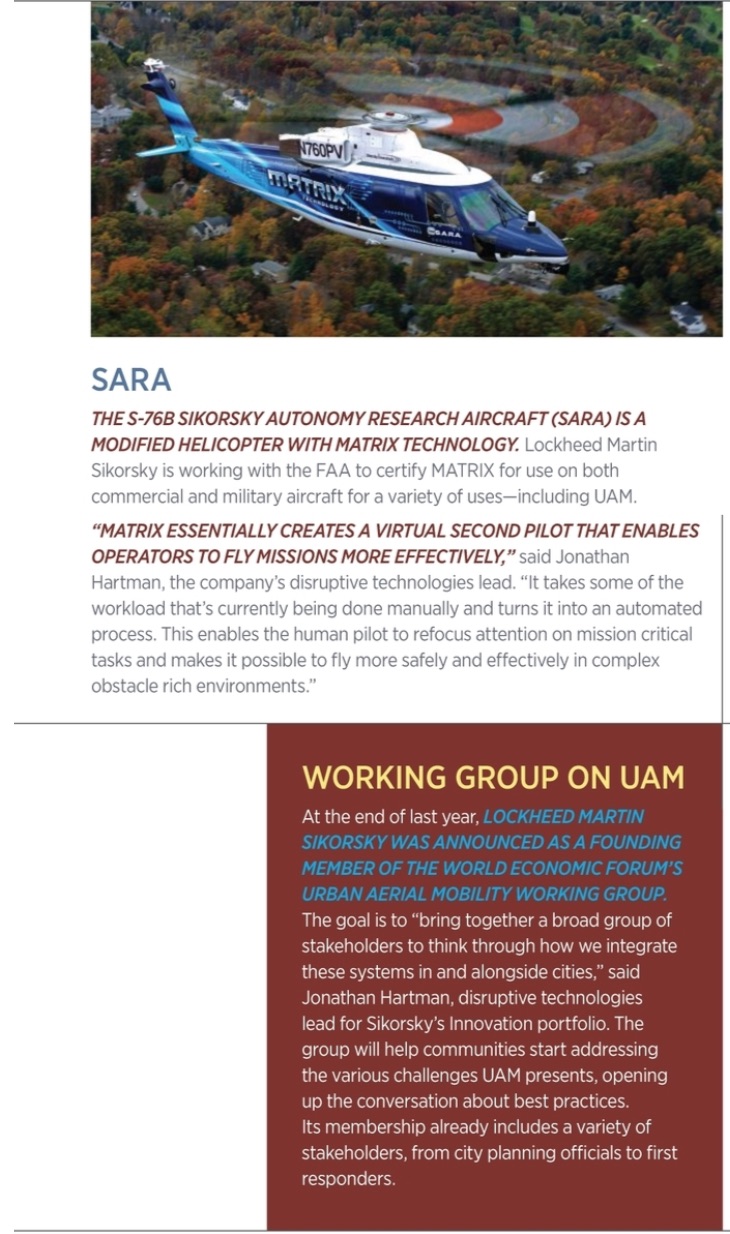
INFRASTRUCTURE AND ECOSYSTEM
Integration. That’s the key to UAM, and it includes combining the various technologies and services that will make flights possible, developing the supporting infrastructure, interfacing with other forms of transportation and introducing these vehicles into the NAS.
When it comes to infrastructure, manufacturers will need to work closely with cities and regulating bodies to integrate these systems in ways that will benefit communities. That means creating vertiports in convenient locations where citizens can easily catch a flight.
“We need to rethink the traditional interfaces between the infrastructure and the aircraft. The air vehicles are an important part of the solution but they’re not the most important,” Hartman of Lockheed Martin/Sikorsky said. “At the end of the day it’s about creating a seamless user experience. What is going to drive adoption? It’s not the individual pieces that matter as much as the whole system. Traditionally, aerospace has asked the world to conform to our limitations, with airports on edges of cities and runways perfectly groomed for take-off and landing. That’s not the case here. We need to think about integrating with existing infrastructure that in some places has been around for centuries.”
Volocopter has its sights on beginning service at the end of 2022/beginning of 2023, which means now is the time to start building out the infrastructure, Nestmann said. The company is in discussions with various governments and cities around the world to define routes and identify structures that can be used as vertiports, or VoloPorts as the company calls them. At minimum these ports will provide a place for the vehicles to take off and land, a power connection to charge batteries and a check-in and boarding area.
“Ultimately, you’d want many heliport-type locations to be in place to make it really robust, but you can start slow and use existing heliports in major cities,” said Nathan Kokes, mobility & advanced technology communications manager for Toyota, which recently partnered with Joby Aviation, an aerospace company in Santa Cruz, California, that’s developing a 200-mile-per-hour, 150-mile range eVTOL. “Use that as a slow rollout and then build from there.”
Existing heliports and community airports are a good start, but they’re not the answer long-term, Fymat said. The whole point of UAM is to offer convenience and speed; that doesn’t happen if passengers must travel five miles to get to their nearest vertiport, only to eventually land at another one that’s five miles from their destination. Eventually, the infrastructure will need to include takeoff and land points that are close to where people live and work, giving them the ability to hop on a scooter or in a rideshare vehicle and arrive at the vertiport in a matter of minutes.
Part of the challenge, of course, is public perception and communities not wanting vertiports in their towns, Fymat said. Citizens might be worried about noise, the safety of vehicles flying overhead or the traffic they may cause. Vertiports, Nordlund added, should be integrated to make the traveling experience convenient, seamless and safe.
“It’s likely that vertiports, or landing pads, will be located in areas where there are already strong transport connections,” said Oliver Walker-Jones, head of communications for Germany-based Lilium, the company developing the five-seater eVTOL Lilium Jet. “Our plan is to connect entire regions, rather than just single cities, meaning the additional transportation time for a first and last mile connection will not have a significant effect on overall journey time.”
Vertiports must be easy for passengers to get in and out of and for emergency personnel to access, noted Karen Tung Cate, advanced air mobility (AAM) deputy project manager for NASA’s Ames Research Center in Silicon Valley. NASA recently changed the name of its UAM efforts to AAM to reflect that these vehicles won’t just be used for urban travel; they’ll also change travel in rural areas and offer cargo delivery. For that to happen, the electrical grid will also need to support vertiport power demands.
Private industry is also trying to understand how ground infrastructure will accept these vehicles as the market matures. “We need to explore what sort of ground-based charging infrastructure we need and what ground-based detect and avoid systems,” Bell’s Sparks said. “I love the opportunity to take hardware off the aircraft, so we’re having healthy conversations with landowners and real estate developers about how they might be able to provide a useful right of way or route planning. Airspace has to come together with ground infrastructure to create an integrated transportation network.
“The integration required for this transportation ecosystem to work efficiently needs to span from micro-mobility solutions all the way into airspace solutions,” Sparks continued. “Integration has to stand across the spectrum of vehicles and across the supporting infrastructure that goes with it.”
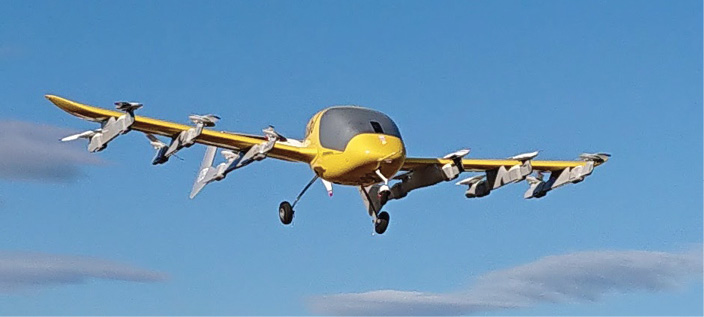

ALL ABOARD
Riders will use an app to book their air taxi and will be able to browse flights based on route or time, Nestmann said. While on-demand flights will be available eventually, Nestmann doesn’t expect that to be the case in the beginning. Users will have to provide identity and weight; Volocopter used face recognition booths during its test in Singapore last year.
When booking the flight, riders will need to decide how to get to the vertiport, Sparks said. Early on, users will likely have to book each trip segment separately. Optimizing the network will provide a highly integrated solution from one app.
“You need to be able to integrate your personal electronic presence and devices with the buildings and infrastructure you have to move through,” Hartman said. “That’s security, privacy and access. At the same time, you need to get to the air vehicle safely, board the right vehicle and then reverse that process when you land. All of that is both a physical problem and a data flow problem. There’s a cyberphysical set of technology that has to come together.”

ROUTE PLANNING
The key to developing routes is to “maximize safety and minimize the local impact on the community,” NASA’s Cate said. That means integrating the vehicles with other aircraft, both manned and unmanned, and working with community leaders and city planners to determine the routes that best meet their needs.
“NASA has worked on unmanned traffic management [UTM] for small drones for years to determine the information that’s needed to be shared for safe operations. Lessons learned from those tests will help shape UAM.
“We have quite a few airspace partners, many from the UTM world, that are interested in figuring out not only how UAM aircraft work with each other but also how they interact with other parts of the airspace, including small drones,” Cate continued. “How do we ensure separation and a safe distance between the different types of vehicles that operate in the airspace?”
Every community is different, so routes will need to be unique. “Maybe instead of flying right over an urban center our route planning allows us to follow known infrastructure like rivers so we can create safety corridors,” Sparks said. “The aircraft will certainly integrate with normal air traffic and will need the ability to react and respond to changes in that environment. We’re also looking at how to incorporate a network or system of vehicles.”
As routes develop, Nordlund sees technologies like artificial intelligence (AI) and blockchain being used to help implement these vehicles at scale so they can “interact in a very safe and productive way.”
GETTING THERE
For UAM to become a reality, there will need to be changes to air traffic management—and that will require the industry to work closely with the FAA, said Damon Vander Lind, general manager for Kitty Hawk’s Heaviside, a high-performance eVTOL. The Palo Alto, California, company also has partnered with Wisk and Boeing to develop Cora, an all-electric two passenger air taxi.
Industry must show how UAM will change the way we travel for the better, but, again, community members must feel safe not only traveling in air taxis but also with them flying overhead. NASA is working with the FAA to determine the safety standard for certification, Cate said, and is beginning testing through the Advanced Air Mobility National Campaign. “With the large number of vehicles we’re talking about, how do we increase the autonomy to be able to control the vehicle and ensure safety?” she said. “There has to be a lot of work on the airspace management side to make these systems more autonomous so we can handle the volume of traffic the industry is anticipating.” Autonomy also could ease pilot certification.
Early flights likely won’t happen in downtowns; remote locations may be more attractive to prove out the technology, Nordlund said. Air taxis may find their first use in emergency situations such as evacuating people in a rural area or where there’s rough terrain. Gradually demonstrating how it will all work will help warm people to the idea.
While community acceptance is a challenge now, Fymat expects that to change as UAM continues to evolve. “I see a day in the future where if your community doesn’t have a vertiport your property value doesn’t go up as much,” Fymat said. “People will want the convenience of being able to get to a vertiport and get to where they need to go quickly. It’s going to be a complete 180.”
Precendent exists for this type of shift.
“One of the areas to make this a reality is to look for the same transition we have seen in commercial flight, as it has gone from a luxury affordable by a few for occasional use to something generally affordable and accessible today,” Lind of Kitty Hawk said. “UAM companies will have to partner closely with the FAA and cities to be seen as a vital component of daily transportation.
“We see the future being one where short distance point-to-point flight is both ubiquitous and affordable.”
